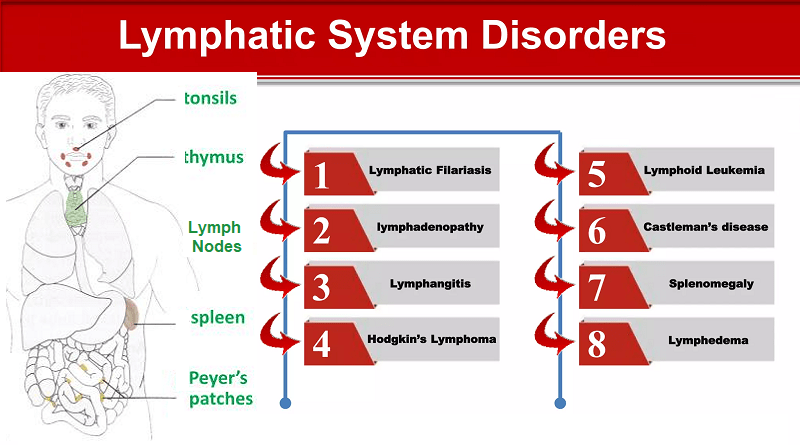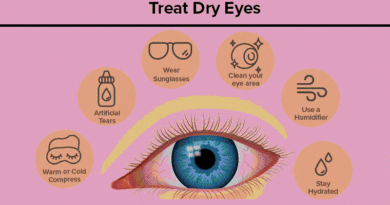The Lymphatic System Disorders
Welcome to our comprehensive guide on lymphatic system disorders! While this system is a very efficient system, it can sometimes face disorders that impact its proper functioning. In this article, we will discuss this essential body system, exploring its functions, components, and the most common disorders affecting it.
What is the Lymphatic System?
The lymphatic system is an intricate network of vessels, tissues, and organs that plays a vital role in maintaining the body’s fluid balance, immunity, and waste removal. It operates parallel to the circulatory system and complements its functions. Comprising lymph nodes, lymphatic vessels, spleen, tonsils, and the thymus gland, this system is a multifaceted and essential part of the human body.
Primary Functions
1. Fluid Balance
One of the primary roles of the lymphatic system is to maintain the body’s fluid balance. It can do by collecting excess interstitial fluid from tissues and returning it to the bloodstream, preventing the buildup of fluids and swelling.
2. Immune Response
The lymphatic system acts as the body’s defense mechanism against pathogens, bacteria, and other foreign invaders. Lymph nodes, scattered throughout the system, contain specialized white blood cells that help identify and neutralize harmful substances, bolstering the immune response.
3. Absorption of Fats
The lymphatic system aids in the absorption of dietary fats and fat-soluble vitamins from the digestive system. This process takes place in the villi of the small intestine, where specialized vessels called lacteals absorb these nutrients and transport them through the lymphatic system to the bloodstream. The lymphatic system’s ability to bolster the immune response is of vital importance, as it acts as a frontline defense before potential threats can spread into the body. By trapping and eliminating harmful substances in the lymph nodes, this system prevents infections from becoming more severe.
4. Waste Removal
In addition to its role in fluid balance, the lymphatic system is responsible for collecting and disposing of cellular waste and debris. This function is important in maintaining tissue health and preventing the accumulation of harmful substances within the body.
Components of the Lymphatic System
1. Lymph Nodes
Lymph nodes are small, bean-shaped structures distributed throughout the body, interconnected by lymphatic vessels. They act as filtration centers, trapping and destroying foreign particles and pathogens present in the lymph fluid before returning it to the bloodstream.
2. Lymphatic Vessels
Lymphatic vessels are thin tubes that carry lymph fluid throughout the body. These vessels are an extensive network that collects excess fluid from tissues, filters it through lymph nodes, and eventually returns it to the bloodstream.
3. Spleen
The spleen is the largest lymphatic organ and serves as a reservoir for blood, platelets, and white blood cells. It filters and cleanses the blood, removing damaged blood cells and pathogens, and plays a crucial role in immune responses.
4. Thymus Gland
The thymus gland is located in the chest region, just above the heart. It is a vital organ in the development of T-cells, a type of white blood cell essential for immune system function. The thymus is most active during childhood and adolescence and gradually shrinks with age.
5. Tonsils
Tonsils are small masses of lymphoid tissue located in the throat. They act as the first line of defense against inhaled or ingested pathogens, preventing infections in the respiratory and digestive tracts.
Lymphatic System Disorders
While the lymphatic system is a remarkable and efficient system, it can sometimes face disorders that hinder its proper functioning. Some common lymphatic system disorders include:
1. Lymphedema
It is a medical condition characterized by the swelling of limbs or body parts due to the accumulation of lymph fluid. It occurs when the lymphatic vessels are damaged or impaired, leading to failure in the proper drainage of fluid from tissues.
Lymphedema is classified into two main types – primary and secondary lymphedema. Primary lymphedema is a rare condition caused by an inherent malformation of the lymphatic system. Secondary lymphedema is more common and caused by damage to the lymphatic system that can be caused by various factors, including:
- Cancer Treatment: Surgery, radiation therapy, or lymph node removal as part of cancer treatment can disrupt the normal flow of lymph fluid.
- Infections: Certain parasitic infections, such as filariasis, can obstruct the lymphatic vessels.
- Injuries or Trauma: Physical trauma or injuries that involve the lymph nodes or vessels.
- Chronic Venous Insufficiency: Conditions that cause venous insufficiency can also contribute to lymphedema.
2. Lymphadenopathy
Is enlargement of lymph nodes, which can result from infections, autoimmune disorders, or malignancies. It often indicates an active immune response to combat infections or the presence of abnormal cells.
3. Lymphoma
Lymphoma is a type of cancer that originates in the lymphatic system. It occurs when certain white blood cells called lymphocytes undergo abnormal growth and multiply uncontrollably. There are two main types of lymphoma: Hodgkin lymphoma and non-Hodgkin lymphoma (NHL).
* Hodgkin lymphoma is characterized by the presence of specific abnormal cells called Reed-Sternberg cells. Non-Hodgkin lymphoma, on the other hand, comprises a diverse group of lymphomas with various subtypes, making it more common than Hodgkin lymphoma.
The symptoms of lymphoma can vary depending on the type and stage of the disease. Common signs may include swollen lymph nodes, fever, night sweats, unexplained weight loss, fatigue, and itching. Diagnosis is done by a combination of physical examination, imaging tests (like CT scans or PET scans), and a biopsy of the affected lymph node or tissue.
SUMMARY
The lymphatic system is a network, of organs and vessels, that plays a crucial role in maintaining fluid balance, supporting the immune system, absorbing fats, and removing waste from the body. This article provides a comprehensive guide to this system, covering its functions, components, and significance. The components discussed include lymph nodes, lymphatic vessels, spleen, thymus gland, and tonsils. Common lymphatic system disorders such as lymphedema, lymphadenopathy, and lymphoma are also explored.
If you have questions you can drop them below in the comment section. You can contact us here: Google page – Helalmedical, or Facebook page. We offer quick and convenient testing options.




